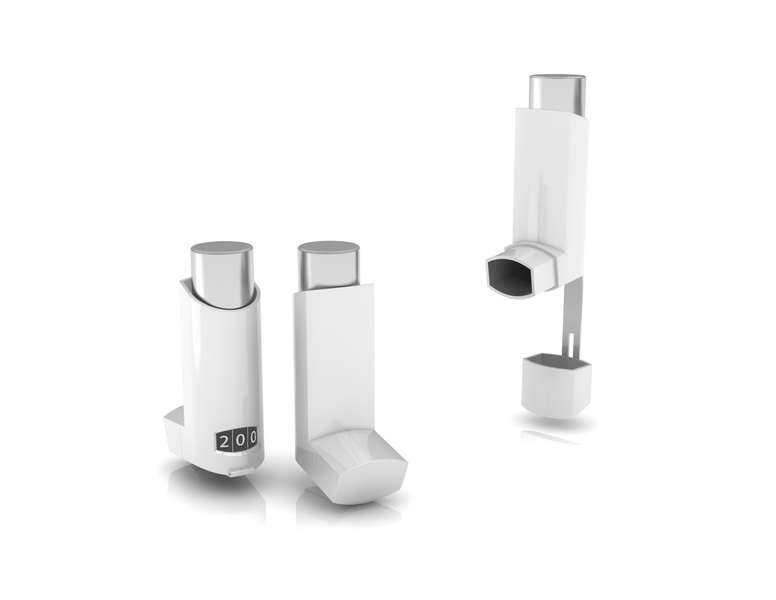Device Training and Onboarding: Patient Preference of Respiratory Device Training and Educational Tools
 As the use of pulmonary drug administration continues to grow, more patients are being introduced to drug delivery devices such as metered dose inhalers (MDIs), dry powder inhalers (DPIs), and nebulizers. Unlike healthcare professionals, who receive professional training on the safe and effective use of delivery devices, patients often have limited or no experience with such products. This can lead to a great deal of challenges, including user errors, improper technique and avoidance behaviors. According to a recent study published by the American College of Allergy, Asthma and Immunology, only 7 percent of inhaler patients follow the proper technique when using their device. As a result, 93 percent of patients are improperly receiving their medication.
As the use of pulmonary drug administration continues to grow, more patients are being introduced to drug delivery devices such as metered dose inhalers (MDIs), dry powder inhalers (DPIs), and nebulizers. Unlike healthcare professionals, who receive professional training on the safe and effective use of delivery devices, patients often have limited or no experience with such products. This can lead to a great deal of challenges, including user errors, improper technique and avoidance behaviors. According to a recent study published by the American College of Allergy, Asthma and Immunology, only 7 percent of inhaler patients follow the proper technique when using their device. As a result, 93 percent of patients are improperly receiving their medication.
For patients diagnosed with chronic medical conditions, the proper use of self-administrated drug delivery is necessary for successful patient outcomes. The most common patient challenges are related to timing and force. Incorrect inhalation force, and improper timing related to activating the inhaler, can lead to an excessive amount of the dose being swallowed, and therefore does not reach the lungs. Patients are often unaware they are using improper technique and thus do not realize they are not receiving the proper dose. This can lead to discontinuing treatment, changing drug brands, and/or blaming the drug itself for not working as intended.
The first 30/60/90 days, known as “onboarding,” is the time when patients are first introduced to the brand. This is time when patients are creating muscle memory and habits are being formed – it’s also the time when the most errors are made, and thus onboarding is the most critical time to improving patient misuse. For most patients, this time includes in-office training by nurses or other healthcare professionals. While this training is vital and beneficial, variability in training technique and environmental conditions can adversely affect this training and cause inconsistencies within patient groups.
Fortunately, advancements in the study of multisensory education have facilitated a deeper understanding of how patients learn. Memory recall retention rates are increased when multiple neurological connections are made within the between regions of the brain. This occurs when senses such as audio, visual and touch are stimulated simultaneously.
In order to further research and understand the topic, Noble, a leader in the design and manufacturing of multisensory educational tools and training technology for drug delivery devices, participated in a study that found that training devices could be effective tools to increase patient confidence and decrease anxiety when taking pulmonary medication, two factors that are closely associated with adherence and patient outcomes.
During the study, participants were asked to complete a pre-interview survey related to their experience with respiratory delivery devices and other variables of interest. Upon completion of the survey, participants were introduced to various training modalities during in-depth interviews. After completing the interviews, participants were administered a follow-up survey to assess their preferences and attitudes toward the various training configurations. These training devices included:
- Instructions for use (IFU) document: Tradition 12 step IFU, based on common themes and steps of currently marketed respiratory devices.
- Mechanical training device: Mechanical simulator of currently marketed respiratory device. All forces, feedback and behavior were accurately simulated.
- Training device with calibrated whistle: Training device with mechanical whistle calibrated to inspiratory flow rate requirements of common inhalers.
- Training device with auditory instructions: Training device with auditory instructions walks patients through the IFU in a predetermined sequence.
- Smart training device that could detect errors: Training device with sensors and adaptive algorithms to detect and teach patients how to prevent errors.
The survey found that users are most confident when training and onboarding with smart training devices that detect and teach them how to prevent errors. Patient confidence is a significant driver of compliance and patient adherence. In light of the importance of confidence during onboarding, training device configurations were evaluated to determine how each affected patient confidence. Based on participants’ feedback, 82 percent of users would feel most confident when training with a device that detects errors. Across all configurations, training devices increased confidence by 41 percent.
Additionally, smart training devices with error-detecting technologies are preferred methods in overcoming anxiety and preventing errors. Similar to confidence, anxiety can result in stress and avoidance behaviors that adversely affect patients’ adherence to therapy. Based on participants’ feedback, 76 percent of users prefer error detection technologies to overcome anxiety when onboarding to device-delivered therapies. Patient anxiety decreased by 18 percent across all training methods evaluated during this study, which further supports the importance of device training.
In recent years, a number of advances in science and technology have resulted in an increased demand for pulmonary-delivered therapies in many global markets. When properly used by patients, these devices administer a nominally prescribed dose for local or systemic uptake by the lung. Based on Noble’s user study and additional research, it is clear that multisensory training devices are the future of effective drug delivery.
• Conference agenda announced:
The highly anticipated educational tracks for the 2015 R&D; 100 Awards & Technology Conference feature 28 sessions, plus keynote speakers Dean Kamen and Oak Ridge National Laboratory Director Thom Mason. Learn more.

